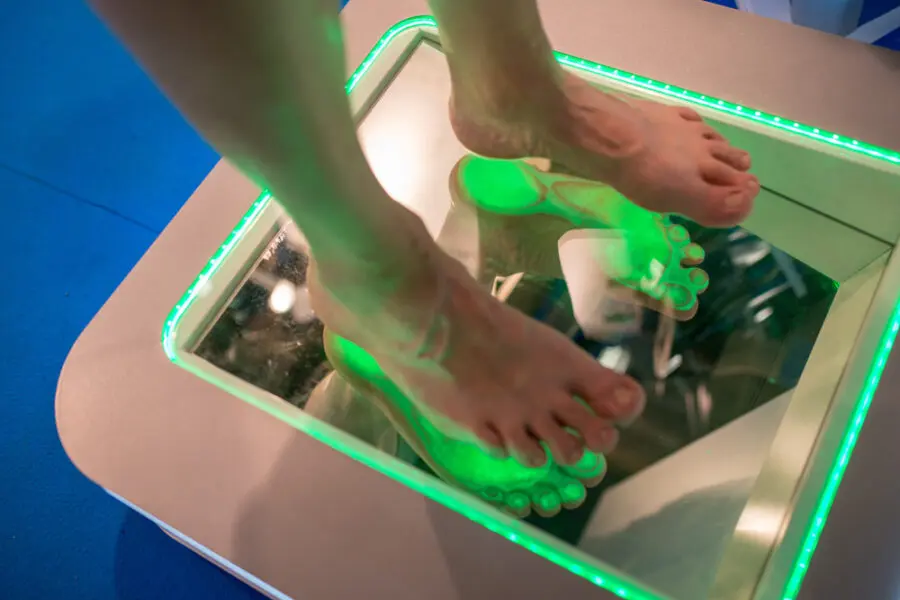
While they are both popular tools for making custom foot orthoses, 2D and 3D scanning techniques are nonetheless quite different.
2D imaging offers a very detailed representation of the sole of your foot.
In turn, 3D scanning allows you to know your whole plantar morphology and effectively detect any anomalies. Only this impression technique lets you obtain foot orthoses adapted to your specific morphology.
While both are part of the podiatrist‘s diagnostic tools, these two techniques have differences in their purposes.
Let’s take a look at what differentiates the two methods and how they can help relieve pain and pressure in your feet.
2D foot scanning
Scanning the foot in 2D is done with the help of a sensor-equipped carpet called a podograph.
As part of its functions, the podograph can determine:
- The exact size of your foot;
- Your type of plantar arch (flat foot, cavus foot, or midfoot);
- The way weight is distributed over your plantar surface;
- The way your foot sets on a flat surface.
On top of its accuracy, 2D scanning offers many other advantages.
For example, it enables:
- The detection of plantar irregularities and their development;
- The detection of postural imbalance;
- A quick and easy analysis;
- A better understanding of how the foot reacts when pressure is applied to it.
Taking 3D impressions of the sole of the foot
Unlike 2D scanning, the 3D impression allows for a more comprehensive analysis of your plantar morphology.
In this modern procedure, the entirety of the foot is captured with a scanner.
Highly precise, this visualization technique is also used to create custom insoles.
3D scanning offers the following advantages:
- Real-time visualization of results by your podiatrist;
- Independent analysis of each foot;
- A lower margin of error;
- Extremely precise modeling of the feet.
Your podiatrist can request additional diagnostic techniques such as postural assessment and the biomechanical exam to ensure an even more effective analysis.
These techniques allow the podiatrist to provide you with foot orthoses that are adapted to your movements and lifestyle.
Which method is the most efficient?
It is largely accepted that 3D scanning is more efficient than 2D, seeing as it provides a more comprehensive modeling of the foot.
Moreover, the accuracy of the information provided by this new technology makes it indispensable in podiatry clinics.
On the other hand, one should not disregard the effectiveness of the 2D scanner, which, despite its limited capabilities, can determine the specificities of the sole of the foot.
Your podiatrist is responsible for deciding whether to use any of these methods.
They will determine which technique is best suited to create your custom foot orthoses during your visit.
Generally, footprint scanning is used to create orthotics to help treat pathologies such as:
- Morton’s Neuroma;
- Hammertoes;
- Plantar fasciitis;
- The flat foot or the cavus foot;
- Metatarsalgia;
PiedReseau connects you with professionals certified to advise you in the purchase of foot orthoses
The podiatrists affiliated with PiedReseau are equipped with the most advanced technology to help relieve your feet from pain and discomfort.
2D and 3D scanning are just 2 of the tools that are currently used by our professionals to treat any of the foot problems you may have.
Would you like to benefit from fully personalized orthotics? All you have to do is contact a PiedReseau clinic right away!